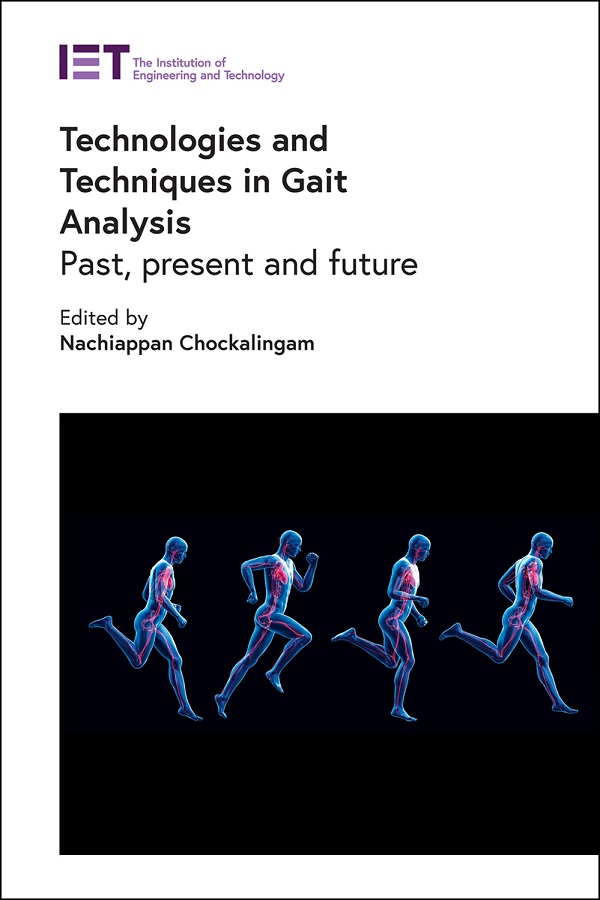- Agricultural Engineering and Technology
- Applied Physics
- Built Environment
- Computing and Networks
- Control, Robotics and Sensors
- Electrical Regulations
- Electromagnetics and Radar
- Energy Engineering
- Healthcare Technologies
- History and Management of Technology
- IET Codes and Guidance
- Manufacturing
- Materials, Circuits and Devices
- Model Forms
- Security
- Telecommunications
- Transportation

Technologies and Techniques in Gait Analysis
Past, present and future
Edited by Nachiappan Chockalingam
Gait analysis is the study of the walking or running pattern of an individual. This can include spatial and temporal measurements such as step length, stride length and speed along with angular measurements of various joints and the interplay between various parts like the foot, hip, pelvis or spine when walking. Gait analysis can be used to assess clinical conditions and design effective rehabilitation; for example, following limb injury or amputation, or other disorders such as a stroke or Parkinson's diagnosis. It can be used to influence intervention decisions, such as whether a patient should undergo surgery, further physiotherapy, or begin a particular treatment regime. Gait analysis can also be used in sports science to monitor and review performance and technique.
Gait can be recorded in a variety of ways, including pressure sensors, force plates, in-shoe pressure systems, through marker-based or marker-less systems using various cameras or sensors to calculate body positions in a set sequence of movements.
This book focuses on both the hardware systems for collecting data as well as data visualisation and mathematical models for interpreting the data. It is written by a range of international researchers from academia, industry, and clinical settings, providing a complete overview of gait analysis technologies suitable for an audience of engineers in rehabilitation technologies or other biomedical engineering fields.
About the Editors
Nachiappan Chockalingam is a Professor of Clinical Biomechanics and Director of the Centre for Biomechanics and Rehabilitation Technologies at Staffordshire University, UK. He is a chartered engineer, registered clinical scientist, a Fellow of the Institute of Physics and Engineering in Medicine and a member of numerous professional organisations. He holds visiting professorships in Malta, India and China. He has over 700 research outputs, including over 240 full research manuscripts and he reviews for numerous journals and grant-awarding bodies worldwide. His research has received funding from various international bodies including the European Commission and British Council. He is involved in charitable and non-profit organisations to help the wider global community on healthy ageing and assistive technology which aid mobility. His current activities at Staffordshire University focuses on translational research. He has played a pivotal role in bringing various allied health professionals to the wider biomechanics and medical engineering community.
Publication Year: 2022
Pages: 378
ISBN-13: 978-1-83953-131-6
Format: HBK
Editors: Nachiappan Chockalingam
